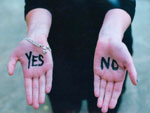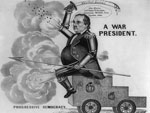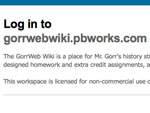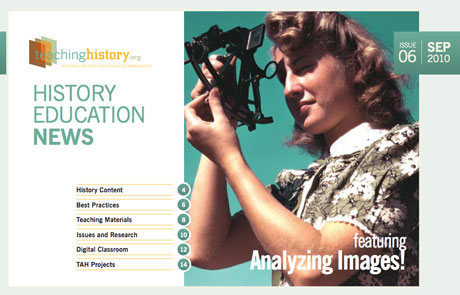Constructivism: Actively Building Knowledge
![Photoprint, [Jess Dixon in his flying automobile], 1940, Kobel Feature Photos, Flickr Commons Photo, 1940, of Jess Dixon, Kobel Feature Photos, Flickr Commons](/sites/default/files/constructivism-150x113.jpg)
Is the theory of constructivism applied in today's history classroom and curriculum?
Constructivism is a broad theory with a variety of perspectives. However the basic tenet of constructivism is that learning is an active process where the learner constructs knowledge rather than acquiring it. The emergence of an inquiry-based approach to history education along with the new opportunities made possible by advances in technology have made constructivist approaches quite applicable in today’s history classroom.
There is a growing emphasis in history education on students being able to construct and analyze historical arguments. Many state standards, such as California’s History and Social Science Standards, call for students to be able to "construct and test hypotheses." Increasingly, both state standards and scholarship in history education are calling for students to analyze primary documents and assess various interpretations of the past.
Constructivism’s focus on the learner constructing knowledge might lead one to ask: what then is the role of the teacher? While students learn from experience from the constructivist view, a main function of the teacher is to shape those experiences. In many cases it is necessary for the teacher to provide scaffolds for students to construct knowledge. For example, sending students to an archive for an hour might not be the most productive way for them to learn how to construct an historical argument. Rather, providing them with a set of modified primary sources can create the conditions where students can begin to develop their own interpretations of the past.
Modeling how to construct an historical argument is also an important role of the history teacher. While an inquiry approach to history education is on the upswing, many students have been taught to simply recall facts. Modeling the complexity of constructing an historical interpretation based on evidence helps students develop their own historical interpretations.
Critics of constructivism fear that such an approach leads to completely subjective understandings of the past and fails to provide the common understandings of the past. Constructivists respond by saying that they are not proposing that students should discover just any ideas about the past, but rather that students develop the skills and dispositions to discern what to believe based on the available evidence.
Many constructivists also believe that students need to apply their understanding to concrete examples and point out that content standards can be mined for deeper concepts that in turn are exemplified by the several facts that are typically included in the content standards.
Technology facilitates constructivist’s approaches in the history classroom. Technology now offers unprecedented access to historical records and has made the goals of constructivism more attainable. Doolittle and Hicks (2003) outline six strategies for using technology to advance the basic tenets of constructivism in the social studies classroom. Theses strategies include using technology as a tool for inquiry, accessing authentic materials, and fostering local and global social interaction. Each strategy is accompanied by several websites that serve as exemplars.
Finally we should note that no single theory or approach should define a teacher’s practice. Students should inquire about the past, but history teachers still need to provide background materials for students. The theory of constructivism is not a prescription for how to teach, but rather provides a useful way for a teachers to think about their practice.
Here are some additional readings on constructivism and the history classroom:
Doolittle, Peter E. and David Hicks. "Constructivism as a Theoretical Foundation for the Use of Technology in Social Studies." Theory and Research in Social Education 31, no 1 (2003): 33.
Duffy, Thomas M. and Donald J. Cunningham. "Constructivism: Implications for the Design and Delivery of Instruction." In Handbook of Research for Educational Communications and Technology, edited by David H. Jonassen, 170-198. New York: Macmillan Library Reference, 1996.
Jadallah, Edward. "Constructivist Learning Experiences for Social Studies Education." Social Studies 91, no 5 (2000): 221–225.
![India ink over pencil, [Section four. Liberty bonds getting kicked around and howling "I wanta go back to par"] (detail), February 15, 1921, Art Young, Library of Congress India ink and pencil, Section four. . . (detail), 1921, Art Young, LoC](/sites/default/files/TacklingTough150x113.jpg)




